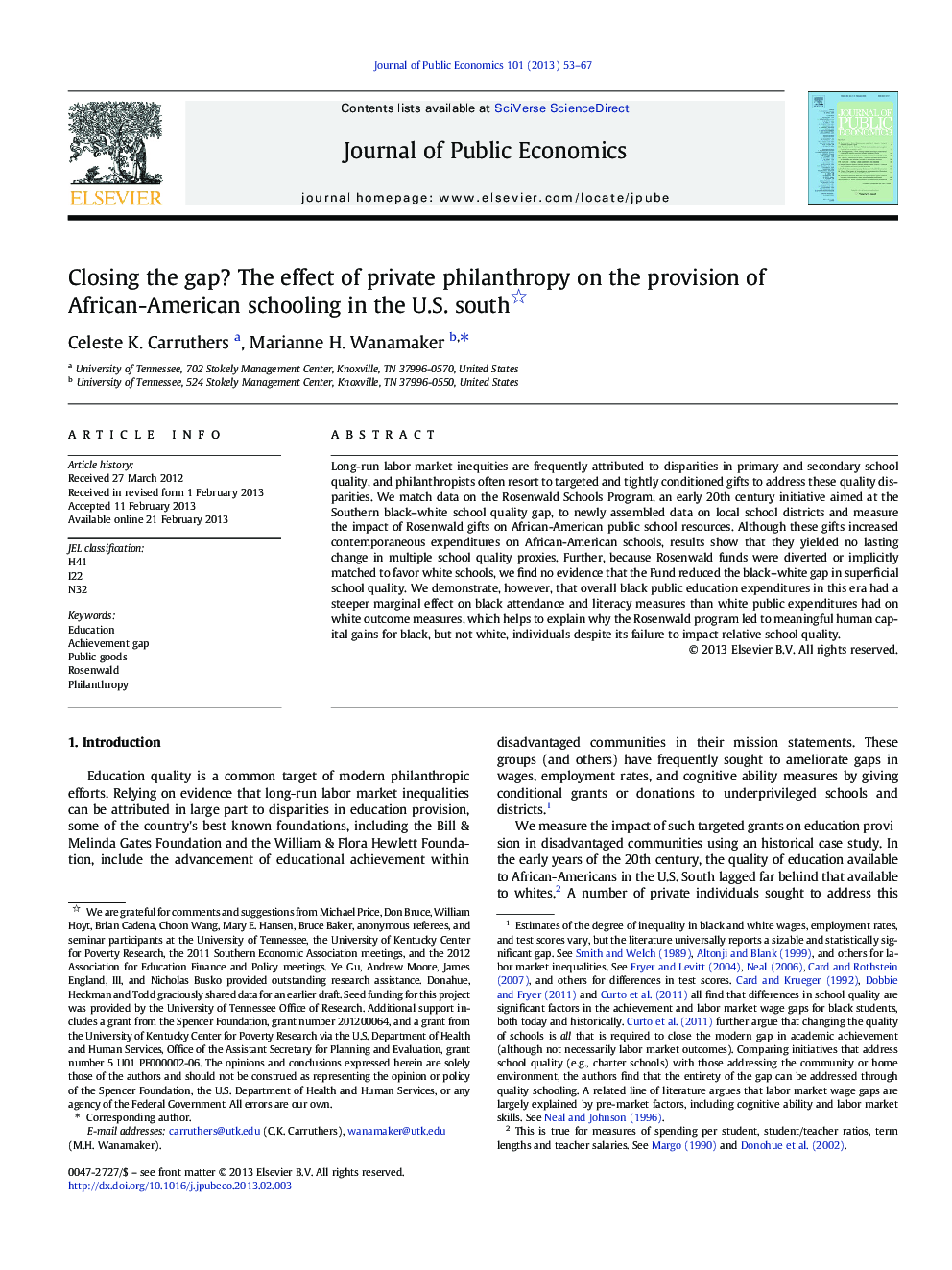| Article ID | Journal | Published Year | Pages | File Type |
|---|---|---|---|---|
| 969713 | Journal of Public Economics | 2013 | 15 Pages |
Long-run labor market inequities are frequently attributed to disparities in primary and secondary school quality, and philanthropists often resort to targeted and tightly conditioned gifts to address these quality disparities. We match data on the Rosenwald Schools Program, an early 20th century initiative aimed at the Southern black–white school quality gap, to newly assembled data on local school districts and measure the impact of Rosenwald gifts on African-American public school resources. Although these gifts increased contemporaneous expenditures on African-American schools, results show that they yielded no lasting change in multiple school quality proxies. Further, because Rosenwald funds were diverted or implicitly matched to favor white schools, we find no evidence that the Fund reduced the black–white gap in superficial school quality. We demonstrate, however, that overall black public education expenditures in this era had a steeper marginal effect on black attendance and literacy measures than white public expenditures had on white outcome measures, which helps to explain why the Rosenwald program led to meaningful human capital gains for black, but not white, individuals despite its failure to impact relative school quality.
► Private philanthropic funds earmarked for black schools largely diverted to white ► Results in a failure to affect black–white school quality gap ► Black human capital gains may be explained by diminishing returns to school quality.
